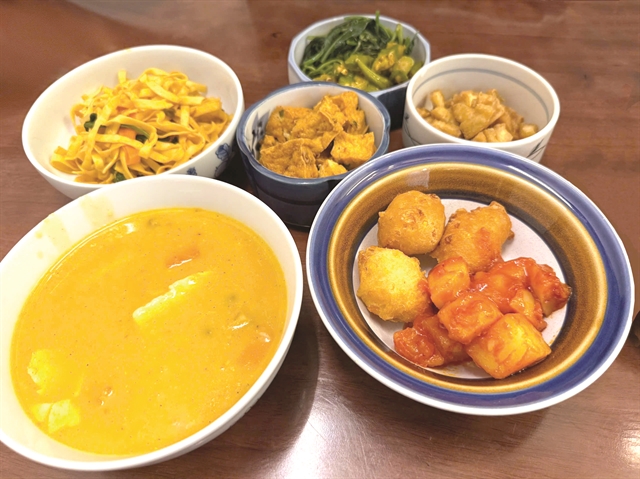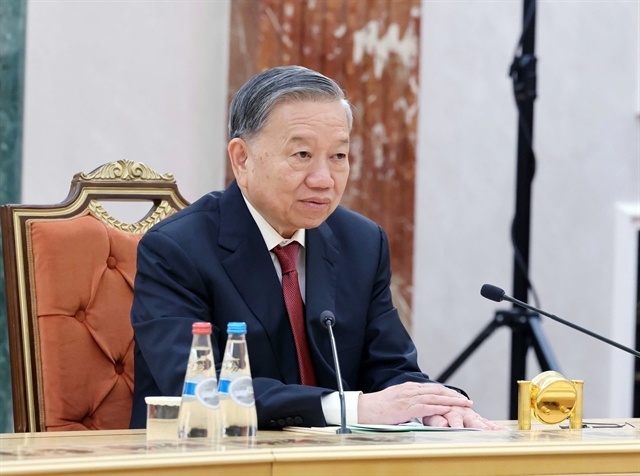 Politics & Law
Politics & Law


|
| Party General Secretary Tô Lâm. — VNA/VNS Photo Thống Nhất |
HÀ NỘI — Party General Secretary Tô Lâm’s upcoming state visit to the Republic of Korea (RoK) is expected to mark a new milestone in the bilateral relationship, creating fresh momentum for trade and investment cooperation between the two countries.
Since establishing diplomatic ties in 1992, Việt Nam and the RoK have steadily deepened their partnership, culminating in the upgrade to a Comprehensive Strategic Partnership in 2022. The Việt Nam – Korea Free Trade Agreement (VKFTA), signed in 2015, has further strengthened bilateral economic links, enabling both sides to reap the benefits of reduced tariffs and expanded market access.
While RoK investment in Việt Nam initially centred on small and medium-sized projects, recent years have seen the arrival of large-scale ventures by leading Korean conglomerates, particularly in manufacturing, electronics, and high-tech industries. This shift has significantly boosted bilateral trade and economic integration.
A complementary partnership
Experts note that the two economies have highly complementary export structures, with humble direct competition. Việt Nam’s exports to the RoK include both products manufactured by Korean-invested firms in Việt Nam such as mobile phones, electronics, and machinery, and goods in which Việt Nam has traditional strengths, including agricultural and aquatic products, processed foods, textiles, footwear, and wooden furniture.
As of May 2025, the RoK is Việt Nam’s largest foreign investor, with 10,203 valid projects and registered capital totalling US$94 billion, accounting for 23.5 per cent of all FDI projects and 18.1 per cent of registered foreign investment. The RoK also ranks second in development cooperation, pledging $4 billion in official development assistance by 2030.
Bilateral trade reached $81.5 billion last year, up 7.3 per cent year-on-year. Việt Nam currently has 112 investment projects in the RoK with total capital of $37.4 million.
The Vietnamese trade office in Seoul highlighted strong growth in key exports like textiles, transport equipment, and machinery. Small and medium-sized enterprises (SMEs) have made notable contributions, while Korean-invested firms in Việt Nam continue to export high-value products back to the RoK, demonstrating effective production.
Việt Nam’s geographical proximity to the RoK, frequent shipping routes, and relatively low logistics costs offer clear advantages for exporters. The VKFTA and other bilateral and multilateral trade pacts have further expanded access for Vietnamese products to the Korean market.
During a recent meeting with RoK Ambassador to Việt Nam Choi Young Sam, Minister of Industry and Trade Nguyễn Hồng Diên affirmed that Việt Nam and the RoK had become each other's leading important partners in many fields. Notably, economic, trade, and investment cooperation remained both a pillar and a driving force in the bilateral relationship. He expressed confidence that the embassy would continue to help expand collaboration, with a shared goal of increasing two-way trade to $150 billion as soon as possible.
In July, the Việt Nam Trade Promotion Agency led a delegation to the RoK under the National Trade Promotion Programme.
Joining the delegation, a representative of Ameii Việt Nam Joint Stock Company said that by participating in the delegation’s activities, the company not only approached potential Korean importers but also connected with a large Malaysian supermarket system interested in the company's dried fruit products.
Local-to-local cooperation is also thriving. In July, the Department of Industry and Trade of Thái Nguyên Province hosted a meeting between businesses from Gyeongsangbuk-do (RoK) and Thái Nguyên to celebrate 20 years of provincial-level partnership.
Officials expressed hope that Gyeongsangbuk-do’s strengths in technology and product design would help foster long-term cooperation and market expansion in Việt Nam.
At the Korea Import Fair 2025 in Seoul, Vietnamese exhibitors impressed major retail chains such as Walmart and Costco, opening opportunities to bring Vietnamese goods from “domestic excellence” to “international standards” and enhance their presence in global supply chains.
Towards balanced, sustainable growth
To accelerate exports to the RoK, the Ministry of Industry and Trade is implementing an action plan to achieve $150 billion in two-way trade by 2030, with a more balanced structure. Priorities include expanding market access for agricultural products such as Vietnamese lychee and passion fruit, and Korean kiwi and tangerines; strengthening cooperation in clean energy, green manufacturing, and environmentally friendly production; investing in logistics infrastructure, including seaports, smart logistics hubs, and digital platforms to optimise supply chains; and deepening integration into major Korean retail networks such as Lotte Mart, E-Mart, Homeplus, and CJ Home Shopping.
RoK Minister of Trade, Industry and Energy Ahn Duk-geun has proposed greater cooperation in supply chains for critical minerals, through the effective operation of the Technology Cooperation Centre for Essential Minerals. He also encouraged Vietnamese support for Korean participation in LNG-fired power projects and expanded collaboration in clean energy and nuclear power.
Minister Diên emphasised that Việt Nam’s fast-growing economy would require tens of billions of US dollars annually for power generation and transmission infrastructure through 2030 – a challenge, but also an opportunity for foreign investors, particularly from the RoK.
Following their meeting, the two ministers signed a memorandum of understanding on cooperation in energy, industry, and trade, aiming to create breakthroughs in bilateral economic ties. They also reaffirmed that their ministries would work closely to facilitate business and investment connections between the two countries. — VNA/VNS